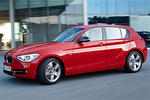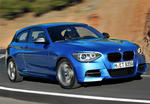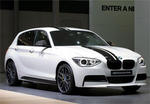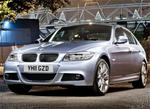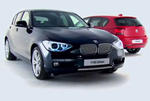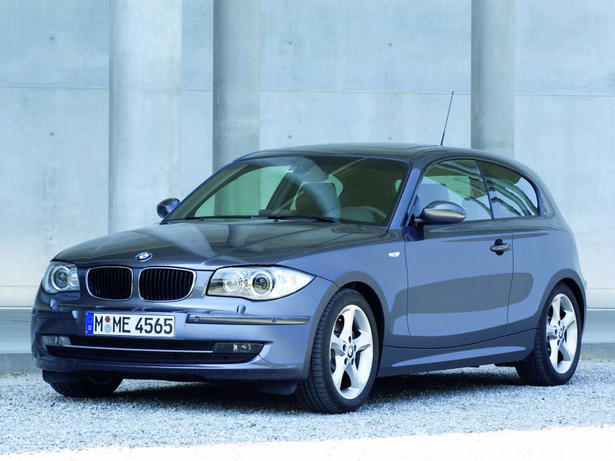
BMW Press Release:
2008 BMW 123d
Munich. The BMW development strategy EfficientDynamics continues to be pursued consistently with new models optimised for reduced fuel consumption and exhaust emissions. For model year 2008, the launch of especially efficient engines also in the high-volume BMW 3 Series will make a major contribution to the overall reduction in exhaust emissions. By autumn 2007 around 40% of all BMW Group (BMW, MINI, Rolls-Royce) cars sold in Europe come with maximum C02 emissions of 140g per kilometre. They confirm the obviousness of the measures that were initiated in the BMW engineering departments 5 years ago.
Model / Output (kW/bhp) / Fuel consumption in EU test cycle (l/100km) / CO2 emissions in EU test cycle (g/km) / Change as compared to previous model (%)
BMW 123d (5-door) 150/204 5.2 138 no predecessor
BMW 123d (3-door) 150/204 5.2 138 no predecessor
The BMW 1 Series: premiere for new engines:
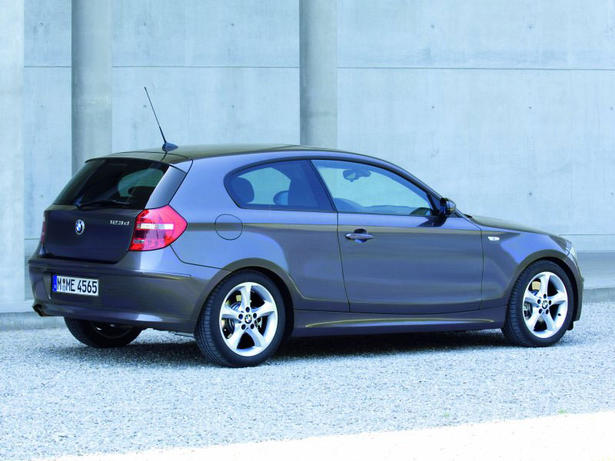
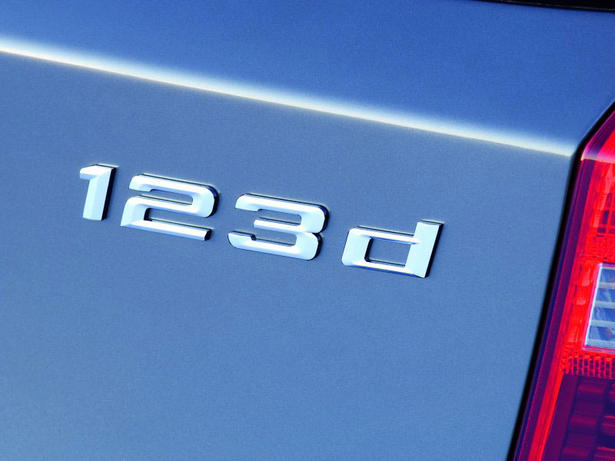
In the model year 2008, the BMW 1 Series is extended to include a fascinating body variation. There are three new BMW 1 Series engines which celebrate their premiere in the model year 2008. For the first time in the model year 2008, the new 4-cylinder diesel engine with Variable Twin Turbo is available both for the 5 and 3-door models. The 150 kW/204 bhp power unit gives the BMW 123d a unique status in a number of disciplines. The new model has a particular fascination due to its degree of pulling power, which is unique within its segment, and it also has outstanding fuel consumption levels. The 5-door and 3-door models make do with 5.2 litres of
diesel for 100 kilometres in the EU test cycle. The CO2 level of the BMW 123d is 138 g per kilometre.
With these figures, the new BMW 123d symbolises the spirit and also the potential of the development strategy BMW EfficientDynamics in a particularly striking manner. Its engine is the world's first all-aluminium diesel power unit to deliver an output of over 100 bhp. At the same time, the BMW 123d is the first large-series vehicle over 200 bhp whose CO2 output is below the 140 g level.
BMW EfficientDynamics enables leading position in all segments:
The engines and model variations launched in the model year 2008 secure a leading position in terms of efficiency in all the relevant segments for BMW. This is the result of the development strategy BMW EfficientDynamics, which has been pursued by the BMW Group for many years in engine development and today already provides an impressive response to the demands of the future in terms of fuel consumption and exhaust emission levels. The result: dynamic vehicles with significantly reduced fuel consumption and CO2 levels as compared to the predecessor models in each case.
The leading position occupied by the new BMW models within their competitive field does not arise from a short-term shift of priorities but is based on a fundamental and long-term orientation of development work. In the new models, technological developments are used which were decided as part of the BMW EfficientDynamics strategy some five years ago and which have now reached a state of readiness for serial production. As a result, not only the highly efficient petrol and diesel engines but also extensive measures for the reduction of fuel consumption and exhaust emissions are now available to a large number of new models. Thus the highly effective package to increase efficiency is not limited to individual special models or niches but forms an integral part of the standard fittings of all new BMW models.



